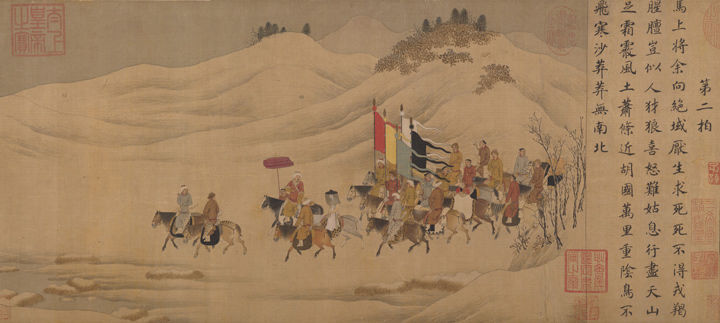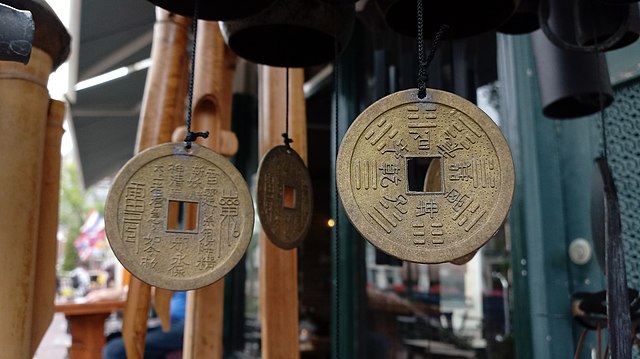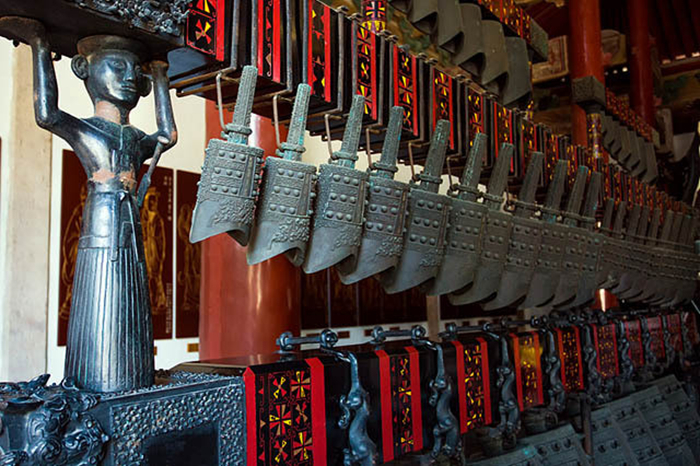Historical Figures and Folk Music
5 min readCai Yan and Eighteen Songs on a Nomad Flute
Eighteen Songs on a Nomad Flute(Hujia Shibapai) leaves its landmark in the history of Chinese gugin music. Its composer, Cai Yan, showed her musical talent at an early age. Yan had an ear for music. When she was only 7 or 8 years old, her extraordinarily acute hearing and distinguished music sense to identify the notes of different strings of the guqin surprised her father Cai Yi,a famous musician.
At the end of Han Dynasty, the society was chaotic with wars. When the Huns invaded the Central Plains, Cai Yan was captured and taken to the remote northern grassland of the Huns.
The king of the Huns was deeply attracted by her artistic talent. Cai became the king’s wife and they had a son and a daughter. But year after year, Cai never stopped missing her hometown in the Central Plains. Finally the Huns were driven out of the Central Plains and Cai Yan was redeemed by Cao Cao and allowed to go home to help her old father sort out his scholar works.
Tortured by parting from her husband and her children, Cai composed the famous melody Hujia Shibapai,a perfect reflection of her rough life and how she missed her children. Until now, this famous melody is still one of the repertoires of guqin concerts.

Cai Yiand Tail-Burnt Guqin
Among the Four Famous Guqin in Chinese music history, the one named Tail-burnt has its interesting legend.
Cai Yi, an outstanding historian and musician in the Han Dynasty, once found thata person was feeding a piece of paulownia wood to the fire to cook his meal. To everyone’s surprise, Cai dragged the wood out of the fire with bare hands. He distinguished the fire on the wood, observed it carefully and exclaimed:”What a pity! What a pity!”The man was confused. Cai Yithen explained that paulownia wood was the first-class material to make guqin. The man said:”I see. If you like it, take it.”Cai happily took the wood home and made a refined guqin with part of the burnt wood at its tail and named it Tail-burnt guqin.

Confucius Learning Music
Confucius, the greatest ancient Chinese thinker and educator in the Spring and Autumn Period, was also an outstanding musician. Confucius not only could play many kinds of musical instruments but also was good at composing and singing.
His valuable modest personality attributed to his achievement in music. After he learned guqin from the musician Shi Xiangzi for some days, the instructor said his performance was “good”. Confucius, however, was not satisfied with the progress and said:”Although I know how to play the music,I can’t play very well”. So he kept training himself for a longer time.
After practicing for another couple of days, his performance was regarded as “very well”by the instructor, but Confucius still did not believe that he had given a perfect performance because he could not feel the spirit of the melody when he was playing. It is not until he finally realized and showed the inner spirit of the melody that Confucius was satisfied. His perseverance deeply touched Shi Xiangzi. Even today, Confucius’s idea of “Being insatiable in learning and tireless in teaching”is still regarded as a motto by most people.

Liu Sanjie, the Fairy Singer
Liu Sanjie(Third Sister Liu) and her stories are very popular among the Zhuang peoplein southwest Guangxizhuang Autonomous Region. According to the local tale, Liu Sanjie was born in a village along the Liujiang River of Guangxi in the Tang Dynasty. She was not only beautiful but also good at singing folk songs. At the age of 17, Liu Sanjie fell in love witha handsome young man who was also a good folk singer. The two lovers swore that they would never separate in their lives. The peaceful happiness was, however, broken by a hooligan in the village who had been for a long time attracted by Sanjie’s beauty. This evil man decided to get her by force. He got his chance on a moonlight night when Sanjie and her lover were sitting on a big rock at riverside to appreciate the beauty of the moon. Suddenly,a gang of hooligans surrounded them. Sanjie and her lover had no way to escape. With no hesitation, the couple jumped into the roaring Liujiang River, hand in hand. Nowadays, on the day of March 3, local people will gather along the riverside of the Liujiang River, organizing a folk-song competition to mourn Liu Sanjie.
Suhe and the Horse-Headed Stringed Instrument
The top of the neck of the horse-headed stringed instrument(matouqin) is carved in the shape of a horse’s head, hence the name. It is the representative instrument of the horse-riding Mongolian people.
The instrument has two strings and it is played with a horsetail-hair bow. The sound box is trapezoid in shape, and decorated with ethnic motifs. Its hazy tone color is suitable for expressing soft and mellow moods.Its haunting melodies can often be heard on the vast Mongolian grasslands.
Besides its unique enchantment of the tone,matouqin has its interesting legend associated with it.Long ago,there lived a robust young man in the Mongolian grassland.The young man was named Suhe and he was a good folk singer.When he sang,one of his white horses would neigh along with the melody of its master as if accompanying his singing.Its sound was very pleasant.Suhe liked his horse very much and they two thus became good friends.Wherever Suhe went,the horse followed.In a horse race,this white horse helped Suhe win the first prize.
The landlord,however,also wanted to have this magical horse and finally succeeded in holding the horse as his own by force.
The white horse missed his former master so much that one day it escaped from the cruel landlord.Although it got the deadly shot of a poisonous arrow from the landlord,the horse kept running until it fell at the feet of Suhe.Suhe was very sad.He caressed the horse and wept.In memory of the white horse,Suhe made a musical instrument with the remains of the horse:its head bone as the sound box and the tail as the bow,and decorated it with a carved horse head.








